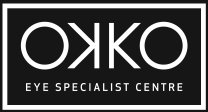Laser eye surgery is an incredible innovation. But can eye surgeons use it to treat cataracts?
The short answer is no.
Eye surgeons use laser eye surgery to correct refractive errors such as short-sightedness, long sightedness, and astigmatism. They cannot use it to remove cataracts. However, laser cataract surgery is an option that utilises laser technology to improve precision and reliability over standard cataract surgery.
Cataract surgery options
There are three types of cataract surgery:
Surgeons perform standard and lifestyle cataract surgery using the same surgical procedure. Laser cataract surgery, however, is a little different. In this post, we’ll explain how.
How is standard and lifestyle cataract surgery done?
With standard and lifestyle cataract surgery, the surgeon makes a tiny incision in the cornea (the clear membrane on the eye’s surface). They do this by hand using an instrument. They then insert a fine ultrasound instrument through the incision. This instrument uses ultrasound energy to break down the cataract lens into pieces. The surgeon carefully removes these pieces under microscopic guidance.
Once the surgeon has completely removed the cataract, they implant the artificial lens. The incision is so small that it self-seals and sutures are generally not required, so the eye feels quite comfortable after surgery.
The only difference between standard and lifestyle cataract surgery is the type of lens implant the surgeon uses. If you opt for lifestyle cataract surgery, you will have access to premium lenses. Unlike standard lenses, premium lenses can give you a range of vision, from distance to close, depending on your needs and lifestyle.
How is laser-assisted cataract surgery done?
With laser-assisted cataract surgery, we place an ultrasound device over your eye to map its surface. This device also gathers information about your lens. The results are sent to a computer that programs a laser, telling it the exact location, size, and depth for incisions.
The surgeon uses the laser to make the corneal incisions and to soften the cataract. Once the surgeon has removed the cataract, they will implant a new lens in the eye. Again, you are unlikely to need stitches as the incision seals itself.
What benefits does laser cataract surgery offer?
Using a laser allows the surgeon to make precise incisions in less time. It can improve accuracy and consistency in cataract surgery. In some cases, the laser can provide more correction than standard and lifestyle cataract surgery.1
Your surgeon can also offer laser cataract surgery with a premium intraocular lens (IOL). For example, laser cataract surgery can improve the reliability of a toric lens implant in correcting astigmatism, or more accurately position an extended-depth-of-focus (EDOF) lens implant to help reduce your need for wearing glasses, readers, and bifocals.
Which type of cataract surgery has a shorter recovery time?
The recovery time for all three types of cataract surgery is the same. Some people can see clearly almost immediately. Others may find their vision slightly blurred in the first few days following surgery; however, this then clears within a week or two. It takes about three months for vision to fully recover from and stabilise following cataract surgery.
Who is suitable for laser cataract surgery?
Not everyone qualifies for laser cataract surgery. Pre-existing medical conditions can affect your eye health, making you ineligible for surgery. Also, if you take certain medications, you may be unsuitable for laser cataract treatment. If this is the case, you may still be suitable for standard/ traditional cataract surgery.
We can examine your eyes and assess your medical history at your first consultation to help us recommend the most appropriate treatment for you.
Does medical insurance cover laser cataract surgery?
The laser cataract surgery cost in Australia is dependent on your location and your level of health cover.
Medicare covers aspects of both standard and laser cataract surgery. This includes the removal and insertion of a conventional intraocular lens.
For premium lenses that provide a greater range of vision, you will incur further expenses. We call these out-of-pocket expenses. At OKKO, out-of-pocket expenses are between $1300 to $1700, depending on your health fund. This price excludes the anesthetist’s fee but includes follow-up for six months.
If you’d like to know more about which type of cataract surgery is best for you, give us a call or book a consultation. Our Brisbane eye surgeons are here to help you restore your vision so you can enjoy life.
Reference
- Traditional Cataract Surgery vs. Laser-Assisted Cataract Surgery. (2020, May 15). American Academy of Ophthalmology. https://www.aao.org/eye-health/diseases/traditional-vs-laser-assisted-cataract-surgery







